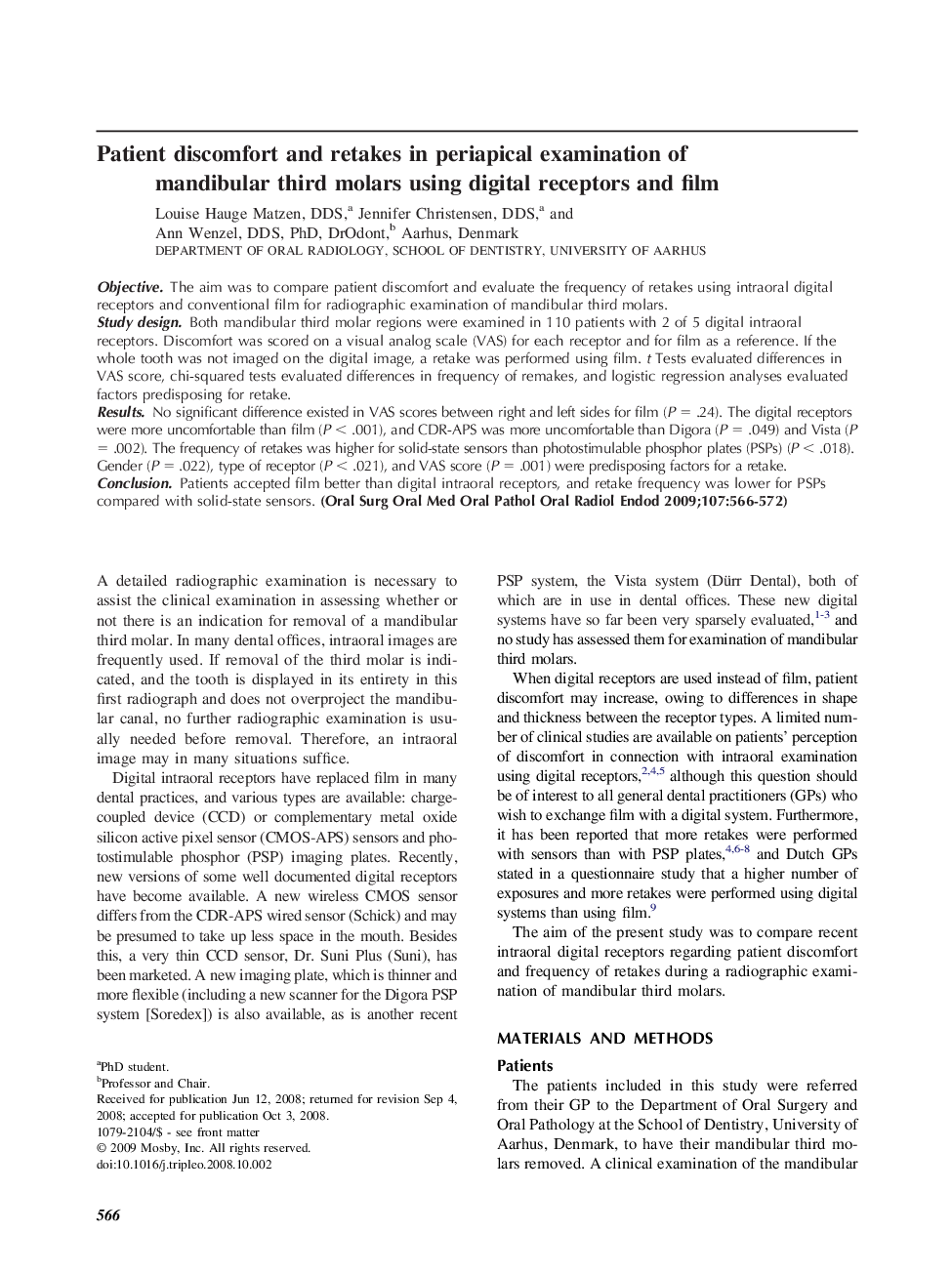| Article ID | Journal | Published Year | Pages | File Type |
|---|---|---|---|---|
| 3168380 | Oral Surgery, Oral Medicine, Oral Pathology, Oral Radiology, and Endodontology | 2009 | 7 Pages |
ObjectiveThe aim was to compare patient discomfort and evaluate the frequency of retakes using intraoral digital receptors and conventional film for radiographic examination of mandibular third molars.Study designBoth mandibular third molar regions were examined in 110 patients with 2 of 5 digital intraoral receptors. Discomfort was scored on a visual analog scale (VAS) for each receptor and for film as a reference. If the whole tooth was not imaged on the digital image, a retake was performed using film. t Tests evaluated differences in VAS score, chi-squared tests evaluated differences in frequency of remakes, and logistic regression analyses evaluated factors predisposing for retake.ResultsNo significant difference existed in VAS scores between right and left sides for film (P = .24). The digital receptors were more uncomfortable than film (P < .001), and CDR-APS was more uncomfortable than Digora (P = .049) and Vista (P = .002). The frequency of retakes was higher for solid-state sensors than photostimulable phosphor plates (PSPs) (P < .018). Gender (P = .022), type of receptor (P < .021), and VAS score (P = .001) were predisposing factors for a retake.ConclusionPatients accepted film better than digital intraoral receptors, and retake frequency was lower for PSPs compared with solid-state sensors.
